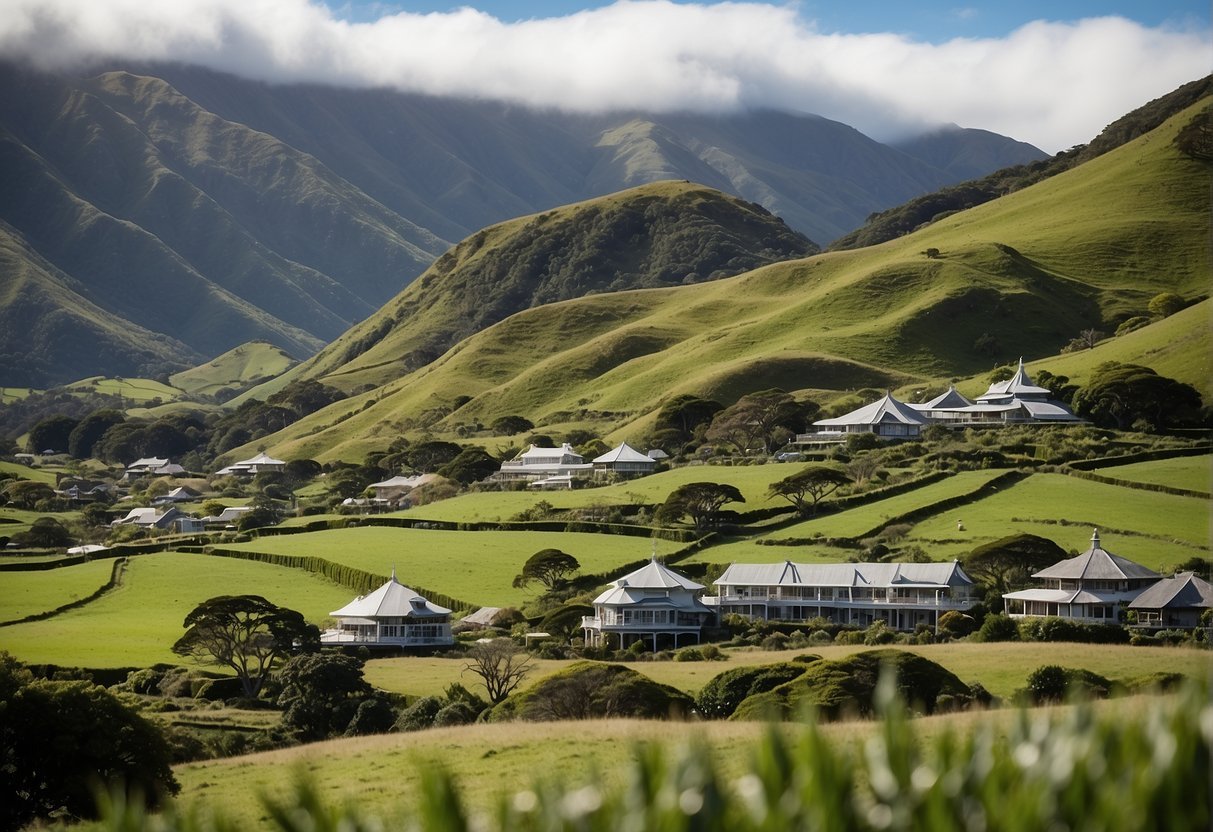Sitios históricos en Nueva Zelanda: exploración del rico patrimonio y cultura
Steeped in a rich tapestry of history, New Zealand offers a diverse array of historic sites that vividly depict the nation’s past. From the signing of the Treaty of Waitangi in the picturesque Bay of Islands to the Maori settlements that trace back to the 13th century, these landmarks are a testament to the country’s unique heritage.
History enthusiasts and casual explorers are drawn to these locales, where stories of early Polynesian navigation, colonial encounters, and cultural preservation come to life.

The preservation of these sites is essential not only for education but also for maintaining New Zealand’s cultural identity. Many notable landmarks have achieved recognition as National Historic Landmarks/Ngā Manawhenua o Aotearoa me ōna Kōrero Tūturu, ensuring their stories endure for future generations.
When visiting these sites, one can’t help but feel a strong connection to the events that have shaped New Zealand, offering a deeper understanding of its people and their journey through time.
Historic Sites in New Zealand – Key Takeaways
- New Zealand’s historic sites offer insight into the country’s diverse history.
- The preservation of these sites is crucial for education and cultural identity.
- Visiting these landmarks provides a connection to New Zealand’s formative events.
Historical Significance of New Zealand
Discover the rich tapestry of events and cultures that have shaped the nation of New Zealand. From the founding moments at the prestigious Waitangi to the pervasive influences of Māori heritage and European settlement, this section explores the country’s pivotal historical landscapes.
Waitangi: Birthplace of the Nation
Regarded as the foundation location for New Zealand as a nation, Waitangi es el hogar del icónico Waitangi Treaty Grounds. El Treaty of Waitangi was signed on 6 February 1840, marking a momentous event in the country’s history. The treaty established a formal agreement between the British Crown and various Māori iwi (tribes), forging a partnership laying down the principles for governance and mutual respect in Aotearoa.
- Ubicación: Bay of Islands, Northland
- Significance: National Historic Landmark, birthplace of modern New Zealand
Māori Heritage and Cultural Landmarks
The heritage of the Māori, the Indigenous Polynesian people of New Zealand, is deep-rooted and visible across the country. From ancient archaeological sites tracing back to early Polynesian settlement to culturally significant landmarks preserving the traditions and histories of various iwi, these sites are pivotal in understanding the origins and ongoing narrative of Māori.
- Important Sites: Ōtātara Pā Historic Reserve, Ōtuataua Stonefields
- Influencia cultural: Rich oral histories, traditional arts, and tribal customs
European Settlement and Influence
The arrival of Europeans brought definitive change to New Zealand’s landscape, both physically and culturally. European settlement introduced a new architectural and societal fabric to the country, merging and sometimes clashing with the pre-existing Māori culture. Structures from the colonial era and landmarks commemorating this period offer insights into the evolving dialogue between native and European influences.
- Key Developments: Colonial-era buildings, such as the historic Stone Store
- Impacts: Societal shifts, trade, and legislative changes initiated by the Europeans
Exploring these landmark sites throughout New Zealand gives you a window into the past, illuminating the moments that have collectively defined this unique nation.
Preservation and Conservation

Protecting historic sites and paisajes naturales in New Zealand is crucial to preserving the nation’s cultural and environmental heritage. Whether a national park or a historic landmark, each site is a testament to the country’s rich history and biodiversity.
National Parks and World Heritage Sites
Kahurangi National Park and other designated national parks play a pivotal role in the conservation of New Zealand’s natural landscapes. Some key points include:
- These parks provide sanctuary for diverse ecosystems and native species, securing them against contaminación and habitat destruction threats.
- World Heritage sites rent natural and cultural heritage deemed of significant opportunity through protected conservation efforts to retain their integrity for future generations.
Historic Place Conservation
When it comes to conserving historic places and buildings, New Zealand’s approach entails:
- Careful maintenance and restoration practices for places like historic gardens ensure they remain true to their period and significance.
- Recognition of select sites as National Historic Landmarks is essential to the nation’s identity and warrants higher protection and advocacy for their continued conservation.
Exploring Historic Sites
New Zealand offers a rich journey through time with its well-preserved historic sites.r you’re standing at the birthplace of the nation at Waitangi or walking through the restored streets of Napier, history comes alive through an array of guided and self-guided tours and museums exhibiting the past in engaging ways.
Guided and Self-Guided Tours
- Waitangi:
- Guided Tour: Experience the site where New Zealand’s founding document was signed with a knowledgeable guide.
- Self-Guided Tour: Roam at your own pace; information panels provide historical context.
- Napier:
- Renowned for its Art Deco architecture, Napier was rebuilt in the 1930s after a devastating earthquake and fire.
- Picton:
- Home to the Edwin Fox Maritime Museum, visit the oldest surviving merchant ship.
- Relevancia cultural:
- North Island tours highlight Maori heritage, while South Island tours focus on European colonisation and Moa bird encounters.
Noteworthy Museums and Exhibitions
- North Island:
- Museums showcase Maori culture and historical events significant to the Treaty of Waitangi.
- South Island:
- Encounter exhibits detailing colonial history’s impact and maritime heritage’s significance.
- Discover historical facts and insights into New Zealand’s unique bi-cultural partnership through authentic artefacts and multimedia presentations.
When visiting these historic sites, you’ll find them integral to understanding New Zealand’s past and its present cultural significance. Whether through the immersive storytelling of a guided tour or the reflection allowed by wandering on your own, each site offers a profound look into the country’s heritage.






